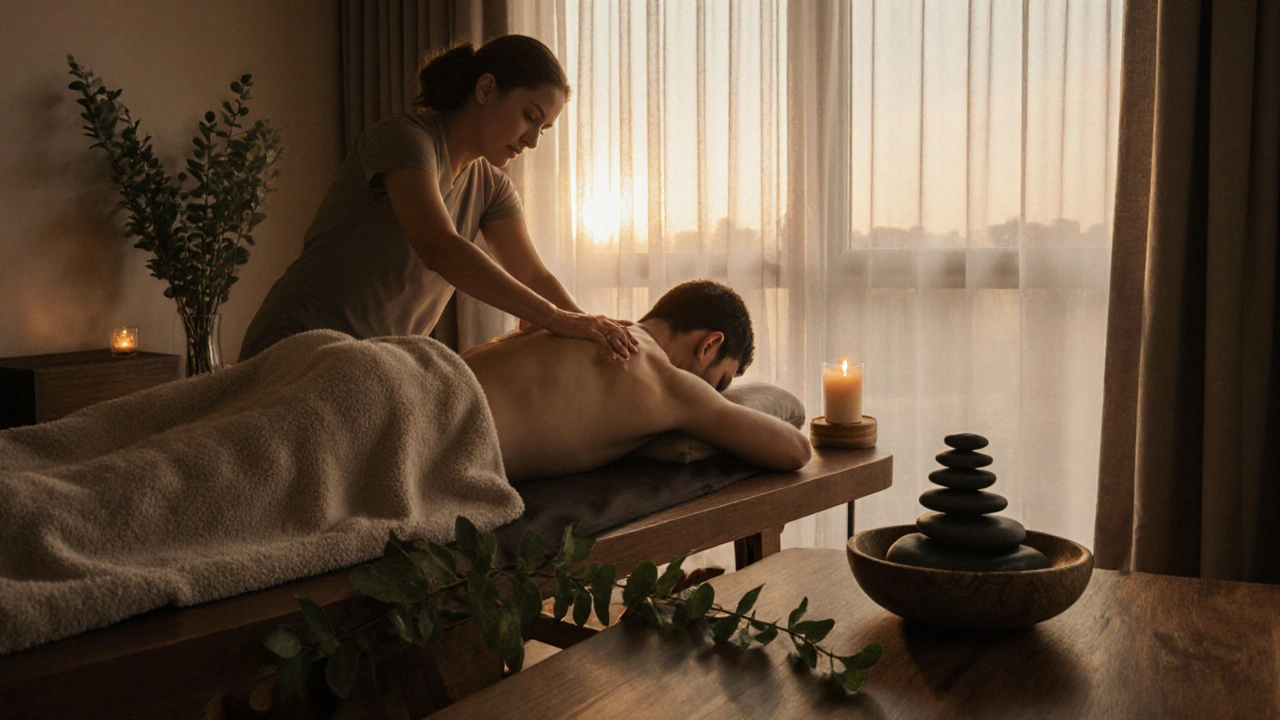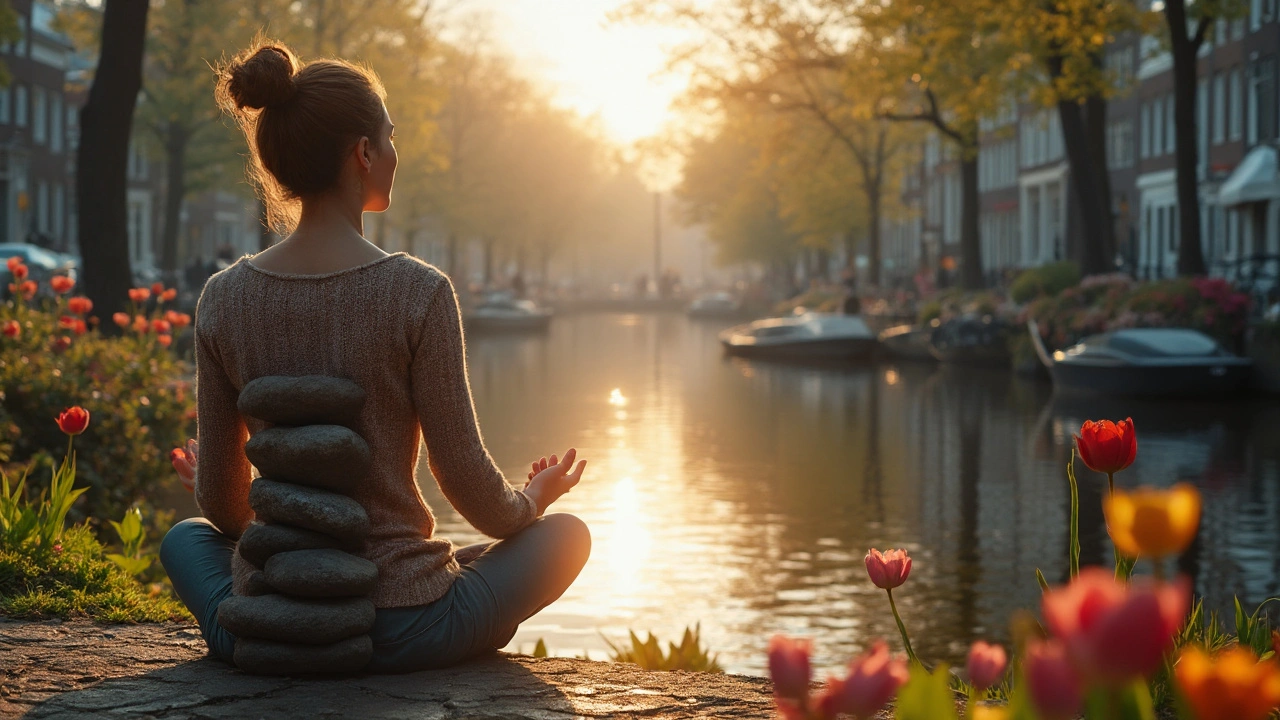Foot Massage Benefits Amsterdam: Boost Circulation Naturally
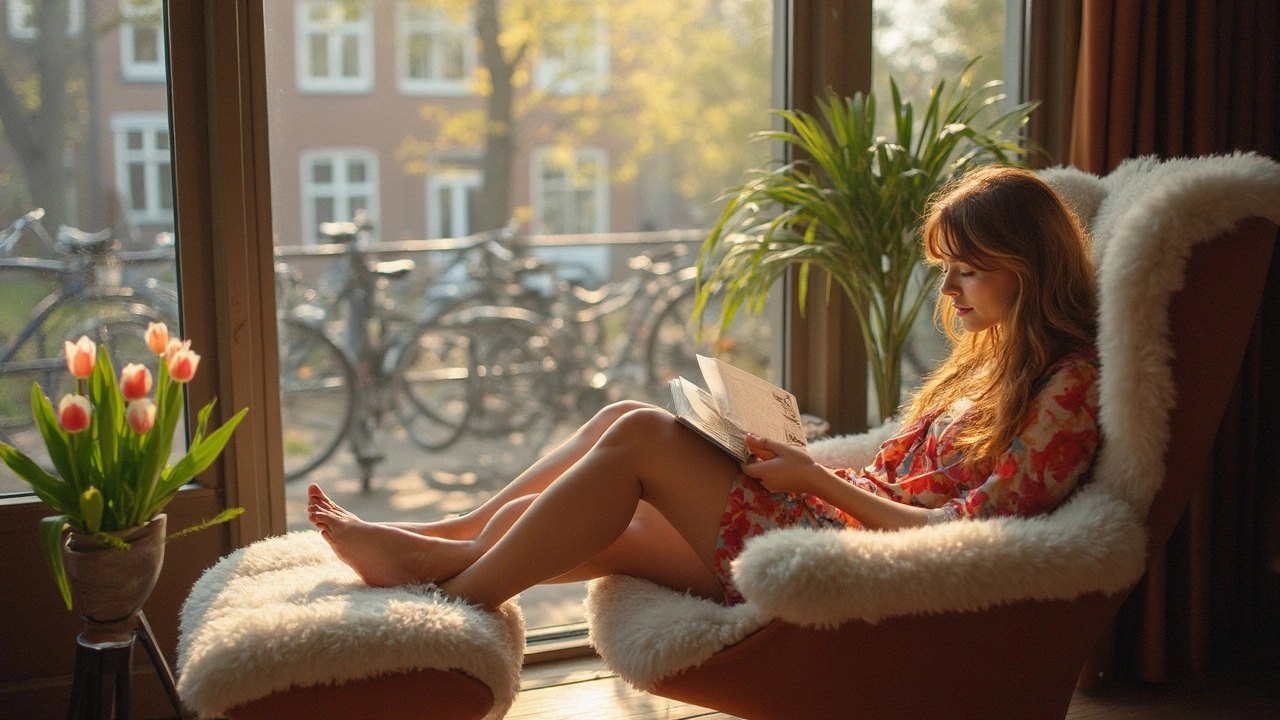
Shoes off, feet up—think about how many steps you take every day through the winding canals, cobbled streets, or even racing for the tram in Amsterdam. The truth is, our feet work overtime without a second thought until they start aching or tingling. Here’s a little secret: a simple foot massage can do wonders, and not just for soothing soreness. Science now backs up what ancient healers in Asia and Africa have practiced for thousands of years. Just 10 minutes of gentle foot pressing can give your blood circulation a proper wake-up call, and that’s just the start.
Key Points
- Foot massage helps stimulate blood flow, easing tired muscles and boosting overall wellbeing.
- It can be done at professional studios or at home with simple techniques.
- Many spas in Amsterdam offer specialized foot massage services, including reflexology.
- Sessions usually last between 20-60 minutes and cost between €25-€60.
- Proper hygiene and trained therapists make the experience safe and relaxing.
Direct Answer – Does Foot Massage Improve Circulation?
Yes, foot massage can noticeably improve blood circulation. When you knead and press on specific parts of the foot, you encourage blood to move through congested areas and back toward the heart. This effect reduces swelling, relieves heaviness, and speeds up healing. Several medical studies have found that people with poor lower limb circulation—think diabetics or those who sit all day—see real benefits within just a few weeks of regular foot massage. It’s not a miracle cure, but an effective complementary therapy, especially if you live in a city like Amsterdam where walking and biking are daily rituals.
Comprehensive Guide to Foot Massage—How Does It Really Help?
So, what exactly is going on under the skin when someone works on your feet? Picture this: blood vessels in the lower legs and feet sometimes get lazy, especially if we’re stuck at a desk or wearing shoes that squeeze. Gentle kneading, stroking, or circular motions on pressure points “wake up” these vessels, helping blood and lymphatic fluid (the stuff that carries waste away) move more smoothly. That means fresher oxygen and nutrients for tired tissues, and less risk of swelling or cold toes. Urban myths aside, this isn’t just a spa fad. Researchers at Leiden University Medical Center found that reflexology foot massage may lower blood pressure and boost peripheral blood flow after just four weeks.
How does it feel? Imagine a slow, steady rhythm moving from your heel up to the ball of your foot, with careful attention to each toe. Most sessions focus on relieving tension in the plantar fascia (the thick band running under your arch)—a common culprit for foot pain. Massage oils or lotions make it smoother, and the addition of warm towels or gentle stones can turn a basic treatment into pure bliss. For people who deal with cold extremities in the Dutch winter, improved circulation can mean cozy toes for a change. Multiple regulars at Amsterdam’s health spas report that their energy levels rise and tingly, restless feet vanish after consistent treatments. Even those without medical issues notice their mood brightening—thanks to the nervous system’s positive response to touch.
Is it only about feet? Not really. If you’ve ever tried reflexology, you’ll know that pressure on certain foot points can send feel-good signals all over the body. Some practitioners report that working the big toe helps with headaches, or that treating the inner arch can soothe lower back tension. While Western science debates some of these broader reflexology claims, there’s little argument over the fact that better foot circulation means less fatigue and a calmer mind.
Definition and Context – What is Foot Massage and Why Does It Matter?
Foot massage is the practice of methodically pressing, rubbing, or kneading the feet—usually focusing on muscles, tendons, and pressure points. Sometimes called “reflexology” when targeting mapped points believed to affect body organs, this art goes back 4,000 years to ancient Egypt, China, and even classical Greece. It was used to heal, ease pain, and balance the body. Today, it’s a regular feature in wellness centers, physiotherapy clinics, and urban spas, especially in walkable cities like Amsterdam where feet deal with daily friction.
Why should you care? Besides instant relief, good circulation in the lower body can prevent long-term issues like swollen ankles, varicose veins, and even blood clots. The Dutch Health Council reported a sharp rise in foot and leg complaints during remote working phases, likely from hours spent sitting. Working from cafés or cycling everywhere? It’s easy to end up with knotty calves or numb toes. A simple 20-minute session not only brings physical relief but also a mental reset, reducing stress hormones and making it easier to sleep. For people living with diabetes or peripheral arterial disease—two groups at higher risk for poor foot health—regular massage is increasingly recommended as part of a prevention plan.
Mental benefits get less attention, but for many, the healing power of touch offers something special. The city’s pace can make you forget your own needs, but the moment someone pays close attention to your feet, your whole nervous system starts to slow down. Whether at a posh Jordaan spa or a quick session by the canals, the effect is the same: deep calm, improved mood, and a stronger connection to your body.
Benefits of Foot Massage – More Than Just Relaxation
The list of pluses just keeps growing. First, there’s pain relief. Runners, dancers, and busy parents in Amsterdam often swear by weekly foot massage to manage not just foot pain, but also knee and lower back discomfort. By easing tight fascia and muscle knots, you move with less strain. There’s even evidence from the Dutch Sports Medical Association that athletes see faster recovery after races when foot massage is part of their cool-down routine.
Improved circulation is a game-changer for anyone dealing with cold feet, pins-and-needles, or swelling after long flights. Gentle compression and rolling boost the flow of fresh blood, and people with “office ankles” (puffy by 5 p.m.) see visible results after just a couple sessions. And for anyone worried about restless legs at night, a foot massage before bed can make drifting off much easier. Your muscles relax, your heartbeat slows, and anxiety melts with every stroke.
But the surprises don’t stop there. Did you know foot massage can support immune function? A University of Amsterdam study found regular therapeutic massage lowered stress hormones and boosted white blood cell counts. While it’s not a replacement for healthy eating or exercise, this bonus is nothing to sneeze at—especially during winter flu season! People recovering from illness or surgery notice swelling goes down faster with gentle footwork, and some physical therapists now teach simple self-massage to hospitalized patients to speed up their healing.
Beyond the medical, there’s the feel-good factor. Imagine coming home after a long bike ride through Vondelpark or standing in line for pancakes at Noordermarkt. Ten minutes of focused footwork—either by yourself, your partner, or a pro—can act like a mini-vacation. Many people say their mood lifts, headaches fade, and their sleep quality improves. Parents with colicky babies sometimes turn to baby-safe foot massage (using gentle pressure) to calm fussy little ones. Even the smallest changes, repeated often, add up to a happier, more resilient body.
Types of Foot Massage Available in Amsterdam
Amsterdam spoils you for choice. From upscale spas to cozy neighborhood studios, plenty of options exist whether you’re a massage newbie or enthusiast. The most common type is Swedish foot massage—relaxing kneading and stroking that soothes tired muscles. If you want a little more oomph, deep tissue styles focus on stubborn knots or chronic pain, using firmer pressure and targeted movements. Reflexology remains hugely popular in the city, especially in the De Pijp and Oud-West districts, where trained practitioners map points on your feet to different organs. Tiny tools like wooden sticks or rounded pebbles sometimes come into play for extra precision.
Sports foot massage is a smart pick for runners, cyclists, and anyone regularly pounding the pavement. It combines stretching, compression, and trigger point work to prevent injuries and speed up muscle repair. Many therapists working along Amstel River routes or in gyms know exactly what runners’ toes need after a 10K. If you’re into something gentler, aromatherapy foot massage uses essential oils like lavender, peppermint, or eucalyptus for added relaxation and an energy boost. For those who prefer digital guidance, several smartphone apps guide you through self-massage routines at home, complete with step-by-step videos and timer functions.
Group options are growing too. Some studios in Jordaan and Oost now offer mini-foot-massage stations, so you can unwind with friends before heading to dinner or after a long museum day. And if you want a cultural twist, look for Thai or Chinese “foot reflex” salons. These blend traditional herbal soaks with vigorous massage—perfect after a cold, rainy day when you crave warmth and deep relaxation. Each type has its fans. You might discover your favorite after a little experimentation, whether you crave the gentleness of aromatherapy or the focus of reflexology.
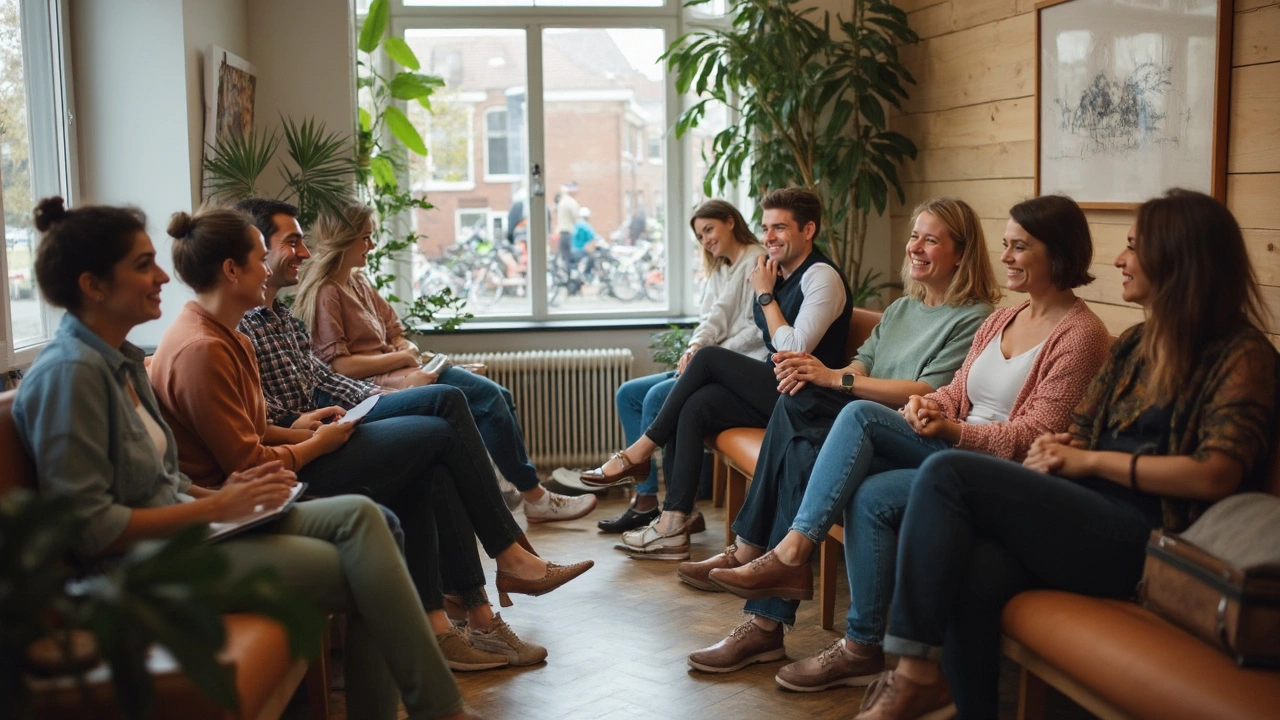
How to Find Foot Massage Services in Amsterdam
If you’re hungry for a good foot rub, Amsterdam makes it easy. Google Maps is always your first port of call—simply type “foot massage Amsterdam” or “reflexology near me” and filter by ratings. But look beyond the flashy ads. Word-of-mouth is gold here: ask at your local yoga studio, check community notice boards in places like De Hallen, or scroll city Facebook groups where real people share their favorite spots. Many studios update their Instagram stories daily, showing off relaxation rooms, happy clients, and even time-limited deals for walk-ins.
For a more specific finder, try websites like Treatwell or Zenbooking, where you can compare prices, therapist profiles, and even look up specialties like diabetic foot care or pregnancy massage. If you want that cozy “hidden gem” feel, peek into the wellness sections of local publications such as Het Parool or I Amsterdam magazine, where editors love sharing their secret spa finds. Neighborhoods like Oud-Zuid, De Pijp, and Oost are hotspots—loaded with small, independent studios that pride themselves on personalized care and a warm vibe, often scented with candles or fresh tea on arrival. Don’t have time for a studio visit? Several licensed therapists now offer mobile sessions at home, bringing the oils, towels, and expertise right to your doorstep.
Accessibility is improving, too. Wheelchair-friendly studios and bilingual staff (Dutch, English, a little German or French) are now the standard, not the exception. And for visitors, hotels in the city center often include foot massage options with their spa packages—just ask at reception. Booking is a breeze. Most places let you reserve a slot directly online, sometimes even as last-minute as two hours ahead. Hot tip: booking early means you can nab a session just after sunset, when the city is at its prettiest and you’re ready to unwind from sightseeing.
What to Expect During a Session
If you’ve never had a foot massage before, it’s pretty straightforward—and, yes, a little addictive. You’ll be asked to take off your shoes and socks, sometimes rolling up your trousers past the calves. Most places let you relax in a comfy chair or lie on a padded table, dimming the lights and playing chill-out music. Some studios will soak your feet in warm water first, sometimes adding sea salt, essential oils, or flowers for bonus comfort.
The therapist usually starts with slow strokes up and down the foot and lower leg—warming tissues and saying hello to any hidden knots. Next, they’ll use thumbs, palms, or even knuckles to target specific points. If you’re getting reflexology, the practitioner might spend extra time pressing under the arch or around the toes, occasionally checking in to see how the pressure feels. Swelling? They’ll use light, sweeping massage to drain fluids upwards. Got sore spots? Expect some firmer, circular movements that work stubborn tension loose, but it should never feel painful—just “good hurt.”
Sessions typically run from 20 minutes (a quick pick-me-up) to a full hour. Afterward, you’ll likely be offered water or herbal tea, since massage can release metabolic waste and gentle hydration helps flush it out. Most people notice a pleasant tingling or a wave of calm that lasts for hours. If you’re prone to ticklishness, let your therapist know—they’ll adjust their technique to minimize giggles.
Pricing and Booking – What Will It Cost Me?
Prices in Amsterdam range widely, so there’s something for every budget. A basic 20-minute session at a small neighborhood studio can start as low as €25, while luxury spas or specialized reflexology treatments can hit €60 or more for a 60-minute session. Packages (like a five-session bundle) often bring the per-session price down. For those combining services—maybe foot and back massage or hot stone upgrades—spas sometimes offer combo deals.
Booking is smooth. Online platforms like Treatwell or directly through spa websites allow you to choose therapists, check availability, and lock in your spot. Many accept instant online payments, but most will let you pay in person too—just in case you prefer plastic or cash. Planning ahead? Booking for weekends or after-work hours is smart, since those time slots are in high demand. Last-minute? Some studios hold walk-in spots (especially in the city center) or you can ask to be put on a waiting list.
Don’t forget to check for discounts. Students, seniors, or residents in specific postcodes sometimes score extra deals—look for mentions on the website or give a quick phone call to ask. And yes, tips are appreciated, but not mandatory in most Dutch wellness shops.
Safety Tips – Keep It Comfortable and Safe
Foot massage is generally safe for most healthy people, but a few basic rules make it even safer and way more enjoyable. Always double-check a therapist’s credentials—look for diplomas or membership in massage associations. This matters even more if you have medical issues like diabetes or circulation disorders. Don’t be shy about sharing your health history or any foot injuries (bunions, sprains, infections) at check-in. A good therapist will happily adjust pressure or switch up techniques to keep things comfy.
Cleanliness is another biggie. Fresh towels, sanitized equipment, and clean hands set the stage for a worry-free session. Valid studios won’t hesitate if you ask to see hygiene certificates. If your skin is cracked, wounded, or you have athlete’s foot, postpone your appointment until you heal up—just to be safe. People with deep vein thrombosis, recent surgery, or contagious foot conditions should ask their doctor before booking.
If you notice redness, swelling, or pain after a session, speak up straight away—these are rare but possible signs of irritation. Pregnant? Many therapists have specialized prenatal training, but always double-check before you book. Kid-friendly options are available for children who need extra comfort (think after sports injuries or cramps).
Comparison Table: Foot Massage vs. Full Body Massage in Amsterdam
| Feature | Foot Massage | Full Body Massage |
|---|---|---|
| Focus Area | Feet & lower legs (sometimes hands) | Whole body |
| Duration | 20-60 minutes | 45-90 minutes |
| Price Range | €25-€60 | €40-€120 |
| Circulation Benefits | Direct to feet & legs | Widespread (body & mind) |
| Convenience | Often shorter, walk-in friendly | Longer appointments, advance booking |
| Best For | Pain relief, swelling, tiredness, quick reset | Comprehensive relaxation, injury recovery |
FAQ: Your Questions About Foot Massage Answered
- Is foot massage painful? — No, it should feel comfortable. You might notice tender spots, but pain means the pressure is too much—ask for an adjustment.
- How often should I get a foot massage for circulation? — Most experts suggest once or twice a week for best results, especially if you’re on your feet a lot.
- Can I do foot massage at home? — Absolutely! Use your hands, a tennis ball, or a small roller and follow online guides for technique.
- What if I’m ticklish? — Let your therapist know ahead of time. They’ll use firmer, slower techniques that minimize discomfort.
- When should I avoid foot massage? — Skip it if you have bleeding wounds, severe swelling, or contagious skin issues, and always consult your doctor if you have chronic health conditions.
- What should I wear? — Loose trousers or shorts are ideal. You’ll just remove shoes and socks, nothing more—very low-key.
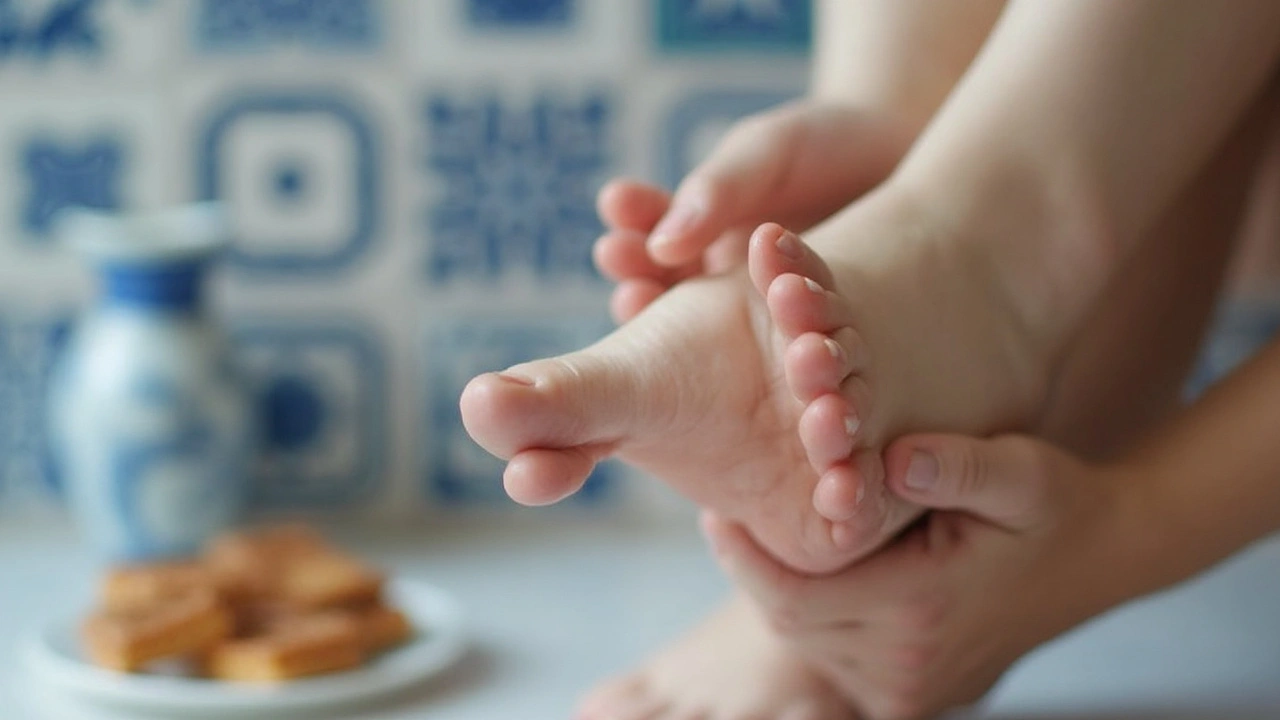
Call to Action
Still putting up with tired, achy feet or waiting for circulation to improve on its own? Give foot massage a try. Amsterdam makes it easy, whether you want a quick revitalizer after work or a weekly ritual in your self-care routine. Book your session today and see how much lighter you can feel—your feet will thank you!
